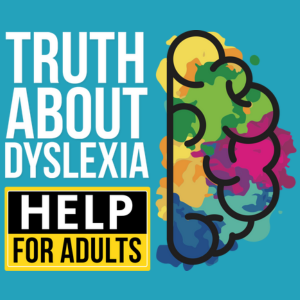
Dyslexia And Balance
Share
Have you ever wondered if balance problems could be linked to dyslexia? The idea struck me when I noticed my coordination seemed a bit off, and I started asking questions about whether improving physical balance could also sharpen mental focus. This episode dives into what I’m discovering about how standing on one foot (and not falling over) might relate to dyslexia.
In today’s episode, I explore whether some dyslexic challenges might be tied to the body’s vestibular system. I share my personal experiences experimenting with balance exercises. Could this be a small piece of the bigger dyslexia puzzle? Let’s find out together.
Why Balance Might Matter
Balance is more than just not tripping when you walk. It’s about how your brain processes what’s going on around you. If you’re dyslexic, you might have noticed that you sometimes feel disoriented, or you bump into things a little more frequently. These quirks might not be coincidence.
Research suggests there’s a link between the vestibular system (which helps your body stay balanced) and certain cognitive functions. It’s not surprising your sense of balance can affect your general focus and possibly your ability to process information quickly.
“You never know what might happen until you give it a go, so why not try standing on one foot just to see what’s going on with your body and mind.” — Stephen
Getting Curious About Physical Exercises
I’ve started a simple routine: stand on one leg for 30 seconds, then switch legs. It doesn’t sound like much, but it’s surprisingly tricky when you’re not used to it. Doing this daily helps me notice improvements in my stability. There’s also a playful element to it that keeps me engaged.
It’s not just about strength, either. It’s about tuning into yourself. If you’re dyslexic, your mind might wander off before you realise it. Having a physical way to refocus can help reset your brain. It’s like pressing pause on life so you can return feeling more centred.
Sometimes I’ll rise onto my toes or close my eyes to test how steady I really am. It’s a good reminder that our senses and our minds are intertwined. The more I practise, the more I notice a subtle boost in my awareness and ability to sustain concentration.
Connecting the Dots with Dyslexia
So why could this matter for people with dyslexia? While not all dyslexics experience noticeable balance issues, many do feel a bit clumsy now and then. Some even report feeling slightly seasick during tasks that involve a lot of reading or constant eye movement.
Balance exercises aren’t a cure-all, but they may help you become more aware of your unique coordination patterns. You might notice:
- Improved posture when sitting and reading.
- Less fidgetiness when focusing on complex tasks.
- Better hand-eye coordination when working on a computer.
If you’re curious, consider adding a few balance drills to your daily routine. It might be as simple as standing on one leg while you brush your teeth or taking a few minutes to stretch in the morning. It’s not about perfection. It’s about noticing small shifts in how your body and mind work together.
How to Get Started
Feeling inspired? Here’s a quick way to ease into it:
- Pick a short time: Choose a set number of seconds, like 20 or 30, to balance on one foot.
- Focus on a point: Pick a spot on the wall or floor, and try to keep your eyes on it to maintain consistent focus.
- Switch sides: Don’t forget to work both feet. It can feel different on each side.
- Stay open-minded: Notice if you feel calmer or see any changes in the way your mind wanders.
- Log your progress: Jot down any small improvements in your "balance diary" (even a quick note on your phone).
By doing these simple steps every day, you’ll create a mini habit that might have bigger ripples in your life. You don’t have to be an athlete to benefit. It’s more about being present in every moment.
Key Takeaways
- Dyslexia can sometimes come with subtle balance issues.
- Practising balancing exercises can boost body awareness.
- Improved physical balance may positively influence focus.
- Simple routines, like standing on one foot, can make a big difference.
- Observing how you feel is crucial — every dyslexic mind is different.
If you’re ready to dive deeper, the podcast player is at the top of the page. I chat in more detail about my personal experiments and some fascinating research you might enjoy. Give it a listen, then try a little balance exercise of your own. Let me know how it goes.

